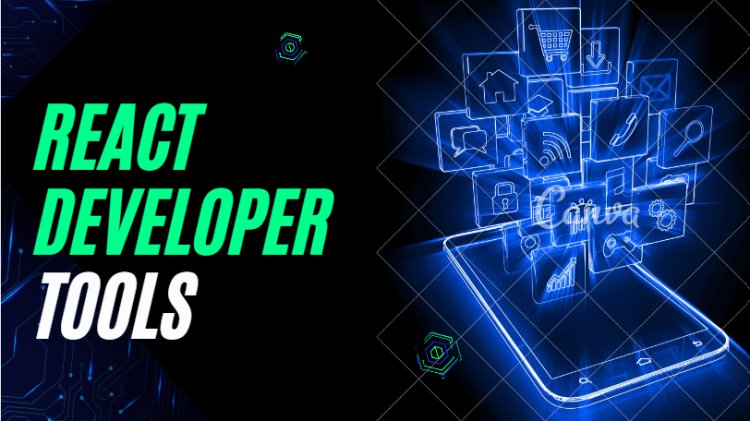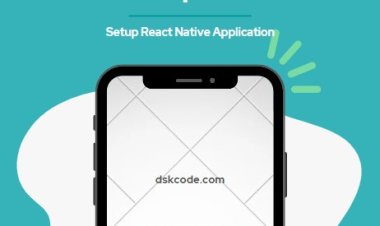How to use React Developer Tools
If you're a React developer, you're likely already familiar with the React Developer Tools. If not, they're a set of tools created by the React team that let you inspect the React component hierarchy in your browser.

Introduction
If you're new to React development, or even just web development in general, you might be wondering what tools you need to get started. In this blog post, we'll introduce you to some of the most popular React development tools, so you can make an informed decision about which ones are right for you.
One of the most important tools for React development is a code editor. There are many code editors to choose from, but some of the most popular ones for React development are Visual Studio Code, Atom, and Sublime Text. If you're just starting out, we recommend trying Visual Studio Code. It's a great all-around code editor that has excellent support for React development.
Another essential tool for React development is a JavaScript debugger. This will allow you to step through your code and find bugs. The most popular JavaScript debugger for React development is React Developer Tools, which is a browser extension.
Last but not least, you'll need a build tool to transpile your code from JSX to JavaScript. The most popular build tool for React is Babel.
With these tools, you're ready to start developing React applications.
Basic Usage
If you're new to React, you might be wondering what development tools you need in order to get started. In this blog post, we'll cover the basics of what you need to get started with React development.
First and foremost, you'll need a code editor. There are a lot of great options out there, but we recommend using Visual Studio Code. It's a free and open source code editor that has great support for React.
Once you have a code editor set up, you'll need to install the React Developer Tools. This is a browser extension that gives you access to React-specific debugging tools. It's essential for React development, so make sure to install it before moving on.
Finally, you'll need a build tool to help automate your development process. We recommend using Webpack, but there are other options out there as well.
With these three tools, you're ready to start developing React applications. If you're looking for more resources, check out the React documentation, which is a great place to start.
Inspecting Props
If you're a React developer, then you know how important it is to make sure your components are working correctly. That's why the React team has created the React Development Tools, a set of tools that makes it easy to test and debug React components.
One of the most useful features of the React Development Tools is the ability to inspect props. Props are the data that is passed to a component from its parent, and they can be used to customize the behavior of a component.
Inspecting props is a great way to make sure that a component is receiving the data it needs from its parent. It's also a good way to see how a component is using the props that it receives.
To inspect props in the React Development Tools, simply select a component in the React tab. Then, in the right-hand pane, select the 'props' tab. This will show you all of the props that are being passed to the selected component.
You can also use the React Development Tools to inspect the props of a component that is rendered by another component. To do this, simply select the parent component in the React tab, and then select the child component in the right-hand pane.
Inspecting props is a great way to debug React components. It's also a great way to learn more about how React components work. So if you're a React developer, make sure to check out the React Development Tools.
Inspecting State
If you're like me, you're always looking for ways to optimize your workflow. That's why I was excited to hear about the new React development tool called 'Inspecting State'.
This tool allows you to inspect the internal state of your React components, which can be really helpful when debugging. It's also great for understanding how your components work, and for finding potential optimizations.
To use Inspecting State, simply add the following code to your component:
React.inspector.inspect(this);
Once you've done that, you can access the Inspector panel in your browser's developer tools. From there, you can see all of the data that is stored in your component's state.
I think this tool will be really helpful for React developers of all levels. If you're just starting out, it can be a great way to learn about the internals of React components. And if you're an experienced developer, it can be a valuable tool for debugging and optimization.
I'm looking forward to trying out Inspecting State on my next React project. I think it has the potential to be a real game-changer for the development process.
Profiling Components
React Development Tools are a set of tools that help developers profile React Components in their applications. The tools help developers understand how components are used, what their dependencies are, and what performance characteristics they have. The tools can be used to identify potential performance bottlenecks and optimize components for better performance.
There are two main tools in the React Development Tools suite:
React Inspector: This tool helps developers inspect React components in their applications. It provides information about the component hierarchy, props and state, and performance characteristics.
React profiler: This tool helps developers profile React components in their applications. It provides information about the component hierarchy, props and state, and performance characteristics.
The React Development Tools suite is a valuable tool for React developers. It can help developers understand the internals of React components and optimize them for better performance.
Debugging React Applications
If you're working on a React application, chances are you'll need to debug it at some point. There are a few tools that can make debugging React apps a bit easier.
One tool that can be helpful is the React Developer Tools extension for Chrome. This extension provides a way to inspect the React component tree, and it can be used to set breakpoints in your code.
Another tool that can be helpful is the React Native Debugger. This debugger works with React Native applications and can be used to set breakpoints, inspect the component tree, and more.
If you're having trouble tracking down a bug, these tools can be a big help. With a bit of patience and perseverance, you should be able to find and fix the issue.
Conclusion
There's no doubt that React is a powerful tool for building sleek and user-friendly web applications. However, as with any tool, there are some drawbacks that need to be considered before using React for your next project.
One potential downside of React is that it can be difficult to debug. Because React relies heavily on JavaScript, any errors that occur can be tough to track down. Additionally, React's use of a virtual DOM can also make debugging more difficult, as the actual DOM structure can be different from what you see in the browser.
Another potential issue with React is its steep learning curve. React is a JavaScript library, so you'll need to have a good understanding of JavaScript before you can start using it. Additionally, React's use of JSX (a JavaScript syntax extension) can also be confusing for newcomers.
Overall, React is a powerful tool that can help you build amazing web applications. However, it's important to consider the potential drawbacks before using React for your next project.

















